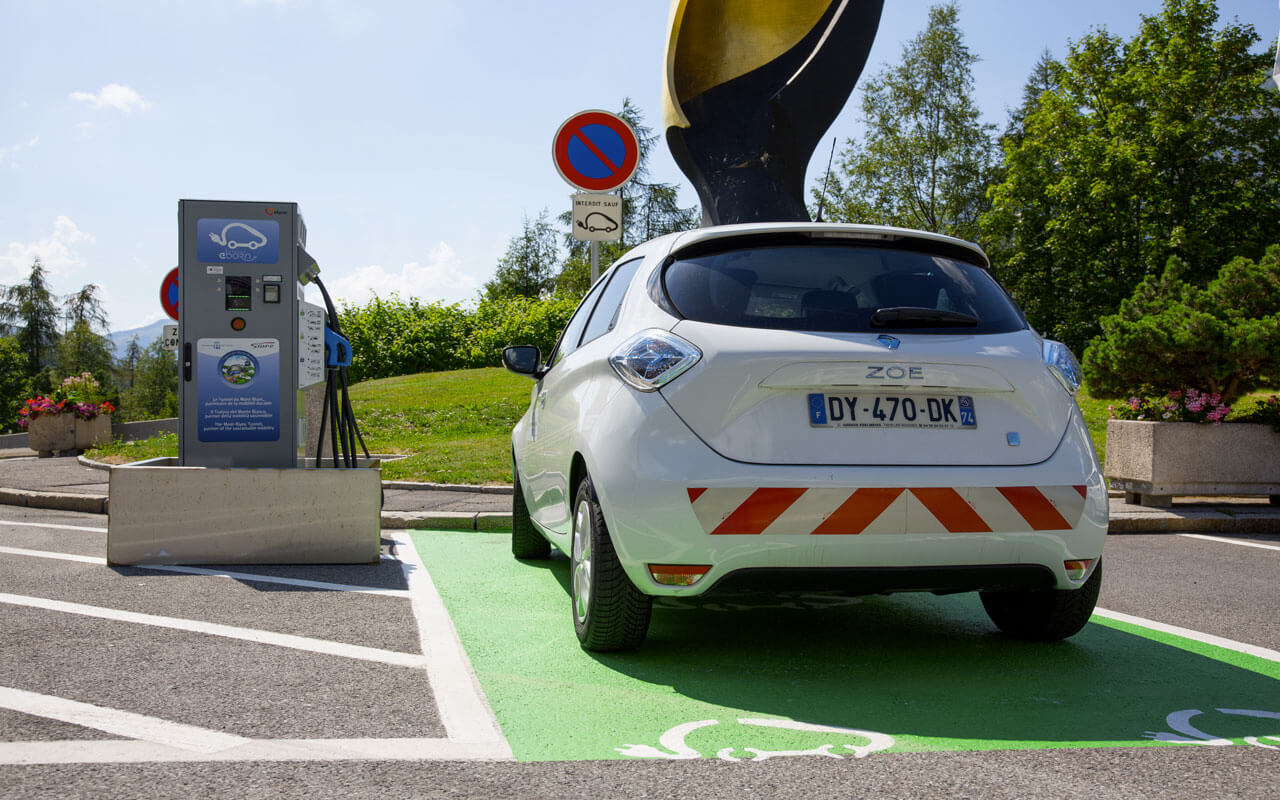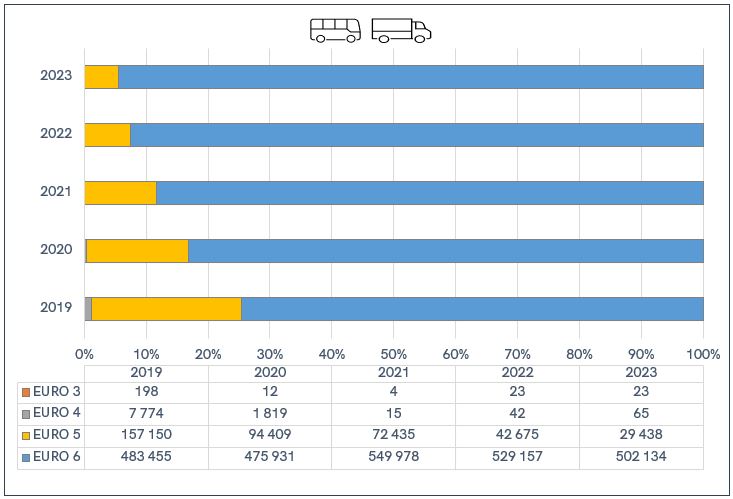Weather
Temperature
0.6°
French tunnel entrance apron
3.2°
Italian tunnel entrance apron
Mont Blanc Tunnel traffic
Weather
Temperature
0.6°
French tunnel entrance apron
3.2°
Italian tunnel entrance apron
Mont Blanc Tunnel traffic
The commitment in favour of the environment
The Mont-Blanc Tunnel is placed in an exceptional site in the heart of the Alps.
It is natural therefore that it is committed to environmental protection. So, for several years, innovative solutions have been deployed in this area. These concern as much the vehicles using the tunnel as that of its functioning.
Permanent surveillance of the air quality
Outside and on the access routes, independent bodies appointed by the regional authorities take control measures through daily readings of the pollution rates, concentration of dust and the noise level.
In France, the checks are made by Air APS (Ain and Pays de Savoie), while in Italy, it is the ARPA (Agence Régionale pour la Protection de l’Environnement).
Inside the tunnel, sensors give instantaneous readings of the air quality at any point in the tunnel. The ventilation system can be regulated automatically and is controlled by the traffic surveillance staff.
In France, the checks are made by Air APS (Ain and Pays de Savoie), while in Italy, it is the ARPA (Agence Régionale pour la Protection de l’Environnement).
Inside the tunnel, sensors give instantaneous readings of the air quality at any point in the tunnel. The ventilation system can be regulated automatically and is controlled by the traffic surveillance staff.



New air conditioners using water
The Mont-Blanc Tunnel is equipped with air conditioners so as to maintain the temperature in the technical areas at 20°C: the large amount of computer equipment and servers emit a great amount of heat which must be regulated to assure that they function smoothly.
In 2012, the GEIE-TMB chose to replace the gas operated air conditioners by those operated by water, fed by water running off the mountain. Benefiting from a constant temperature of 9°C throughout the year, this water provides natural cooling and a reduction in energy consumption.
This system, which was experimental, was deployed in the technical areas in the centre of the tunnel, making the Mont-Blanc Tunnel the first operator of road equipment to use device of this type.
In 2012, the GEIE-TMB chose to replace the gas operated air conditioners by those operated by water, fed by water running off the mountain. Benefiting from a constant temperature of 9°C throughout the year, this water provides natural cooling and a reduction in energy consumption.
This system, which was experimental, was deployed in the technical areas in the centre of the tunnel, making the Mont-Blanc Tunnel the first operator of road equipment to use device of this type.
A particle filter
A particle filter was brought in to service in 2011 near the Mont-Blanc Tunnel’s French entrance. This innovative technology captures the fine particles emitted by vehicles. This therefore avoids them being ejected in to the atmosphere.

Rapid recharging stations for electrical vehicles
Aimed at contributing to the development of eco-friendly tourism in the two valleys at the foot of the Mont Blanc mountain range, GEIE-TMB has installed on both aprons an electric vehicle rapid charging station for use by customers: the station on the Italian apron is connected to the Italian public electricity network, Duferco; on the French apron it is connected to the French public electricity network, Syane.


Innovation Challenge
One of the three themes of the Innovation Challenge launched in 2018 was “the environment” A number of ideas have been identified and are currently being studied: construction of a hydroelectric plant on each square of the Mont Blanc Tunnel, in order to exploit the infiltration water (drainage channel) to generate electricity; use of electric service vehicles that can be recharged using induction coils, making the accelerators on the tunnel vault reversible, in order to generate electricity and replacing the current blades with carbon blades to reduce the electrical consumption of the accelerators.
Towards automated driving in the Tunnel: Platooning
One of the main themes promoted by the MBT is the driving of vehicles in tunnels. In particular, the focus is on a technology that exists in theory but is decidedly innovative from a practical point of view: Platooning.
The term “platoon” means “group” and platooning consists of connecting the vehicles to each other, digitally, so that one of the vehicles “drives” for the other members of the group. This technology is aimed at heavy vehicles and could be of strategic interest for our management of the Mont Blanc Tunnel.
Firstly, this technology could reduce the risk of events in tunnels, by entrusting the driving of several heavy goods vehicles to a single driver. Moreover, as this technology establishes a digital link between vehicles, it would improve the fluidity of traffic in tunnels and the reactivity when a vehicle stops in tunnels.
Finally, this technology would make it possible to reduce the fuel consumption of heavy goods vehicles that follow the main one, thus contributing to our action in favour of the environment, which has been underway for several years.
This concept has not yet been applied in Europe. Therefore, in view of the advantages described above, the MBT-EEIG, in close cooperation with the concessionary companies ATMB and SITMB, has become a member of the ETPC (European Truck Platooning Challenge). The MBT-EEIG therefore represents the Mont Blanc Tunnel and, more generally, all European tunnels. The Mont Blanc Tunnel has been proposed as a place of experimentation, in order to speed up the technical implementation. The MBT-EEIG participates in events of the European Parliament to contribute to the creation of the regulatory and normative content to make Platooning a reality on our binational road network.
The term “platoon” means “group” and platooning consists of connecting the vehicles to each other, digitally, so that one of the vehicles “drives” for the other members of the group. This technology is aimed at heavy vehicles and could be of strategic interest for our management of the Mont Blanc Tunnel.
Firstly, this technology could reduce the risk of events in tunnels, by entrusting the driving of several heavy goods vehicles to a single driver. Moreover, as this technology establishes a digital link between vehicles, it would improve the fluidity of traffic in tunnels and the reactivity when a vehicle stops in tunnels.
Finally, this technology would make it possible to reduce the fuel consumption of heavy goods vehicles that follow the main one, thus contributing to our action in favour of the environment, which has been underway for several years.
This concept has not yet been applied in Europe. Therefore, in view of the advantages described above, the MBT-EEIG, in close cooperation with the concessionary companies ATMB and SITMB, has become a member of the ETPC (European Truck Platooning Challenge). The MBT-EEIG therefore represents the Mont Blanc Tunnel and, more generally, all European tunnels. The Mont Blanc Tunnel has been proposed as a place of experimentation, in order to speed up the technical implementation. The MBT-EEIG participates in events of the European Parliament to contribute to the creation of the regulatory and normative content to make Platooning a reality on our binational road network.
Thermoregulated roads
The innovation and technological development service of the MBT has the task of evaluating the opportunity to make thermal exchanges with the infiltration water coming from the drainage channel of the tunnel, to allow, on the one hand, the heating of the road deck of the ramps during the winter (thus limiting the use of chloride for thawing), on the other hand the maintenance at low temperature of the asphalt during the summer (thus extending its life).
Heavy vehicles divided into pollution categories
From 2002 (date of tunnel’s reopening) to 2013, and in 2018, an ecological pricing has been introduced, inciting carriers to use the most recent vehicles, equipped with modern and efficient anti-pollution devices. In practice, toll tariffs for vehicles that are ecologically less efficient have been increased.
In parallel, the competent authorities have gradually "selected" vehicles that are authorised to transit the Mont-Blanc Tunnel, limiting them to the most efficient European pollution categories in terms of protecting the environment (Euro 5 and 6).
The latest rulings prohibit the transit of:
- goods transportation vehicles of over 3.5 t, classified Euro 3, in effect since 1 September 2019,
- goods transportation vehicles of over 3.5 t, classified Euro 4, in effect since 1 July 2020.
In parallel, the competent authorities have gradually "selected" vehicles that are authorised to transit the Mont-Blanc Tunnel, limiting them to the most efficient European pollution categories in terms of protecting the environment (Euro 5 and 6).
The latest rulings prohibit the transit of:
- goods transportation vehicles of over 3.5 t, classified Euro 3, in effect since 1 September 2019,
- goods transportation vehicles of over 3.5 t, classified Euro 4, in effect since 1 July 2020.

We only use those technical cookies which are strictly necessary to ensure you get the best possible experience on our website, as indicated in our cookie policy.